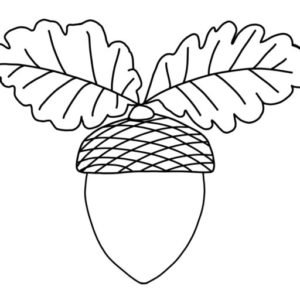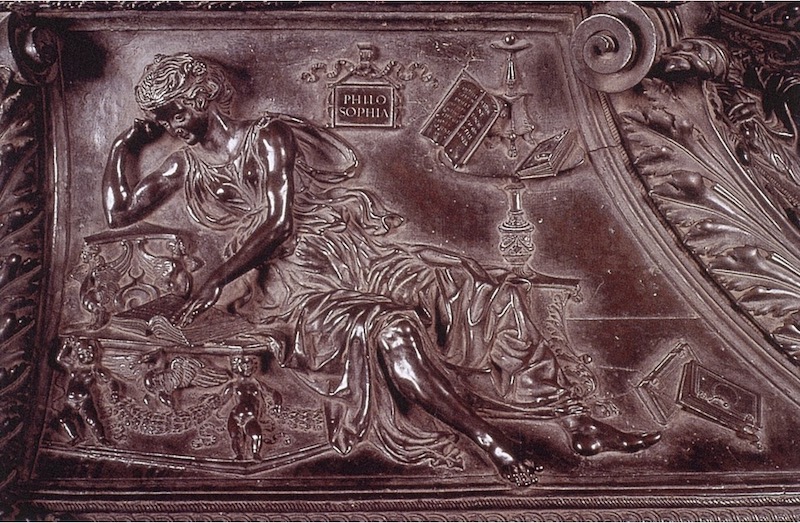Philosophy
Philosophy (figure 38) has been described in all the writings detailing the allegorical figures of the Liberal Arts. In Capella’s book, she is described as the “mother of so many scholars and men so illustrious.”[102] Moreover, Capella writes that she is one of the acquired disciplines, associating her place with the disciplines of Dialectic, Grammar, and Rhetoric. Alain de Lille’s Anticlaudian states that Philosophy was separated from the rest of the Arts as she wore longer robes and was thus elevated over the other disciplines. However, this does not translate into Pollaiuolo’s representation of the discipline, as all the disciplines wear long gowns. Boethius was one of the first writers to give Philosophy a dominant place in the allegories of the Liberal Arts. She is introduced as the head of all the arts, chasing away the muses so that the Liberal Arts can replace them as “patrons of knowledge and expression.”[103] Therefore, the figure of Philosophy served to help transition the Liberal Arts from individuals associated with Pagan muses, to acceptable figures within Christianity. A figure who was larger than a human, Philosophy wore a dress ornamented by a ladder with rungs that range from the Greek letters Pi to Theta, and on each rung was a discipline of the Liberal Arts.[104] Boethius describes her further, writing that she holds two books in her right hand. Although this description is not explicitly rendered on the tomb, a general conception associated with Poetry can be identified throughout the tomb, reflected by the eloquent female bodies within each discipline.
In Pollaiuolo’s panel, she is shown in a full dress, intently focusing on the open book on her desk. Inscribed are two excerpts from Aristotle’s writing (figure 39). The first comes from Metaphysics, writing “All men want to understand nature” while the other sentence comes from a translation of Physics translated by William of Moerbecke, writing “understanding and knowledge affect all sciences of which the principles are either causes or elements.”[105] Pollaiuolo adapts the details as described throughout earlier writings to create the figure of Philosophy. One of the figures with the most clothing and therefore drapery, Philosophy is surrounded by books, evoking the process that scholars had to go through to become learned philosophers by studying classical texts. Through her intense concentration on the book open in front of her and the two open books on the table to her left and the two books disheveled on the floor (figure 40), it is clearly communicated that Philosophy is learned and erudite, achieving this knowledge through her study of books. With an eagle and swags represented on the bench in front of her, these elements suggest the “primacy and abundance of philosophical wisdom” demonstrated by the books scattered throughout the composition, this abundance is visually reflected in the panel.[106] The association of Philosophy with books and inscriptions related to all of the disciplines further denotes her as the head of the traditional, worldly Liberal Arts, which is further emphasized by her location at the head of the tomb.
Figure 38. Antonio Pollaiuolo, Tomb of Sixtus IV, Detail of Philosophia, c.1484-1493
Figures 39 and 40. Antonio Pollaiuolo, Tomb of Sixtus IV, Detail of Philosophia Inscription and Books, c.1484-1493



